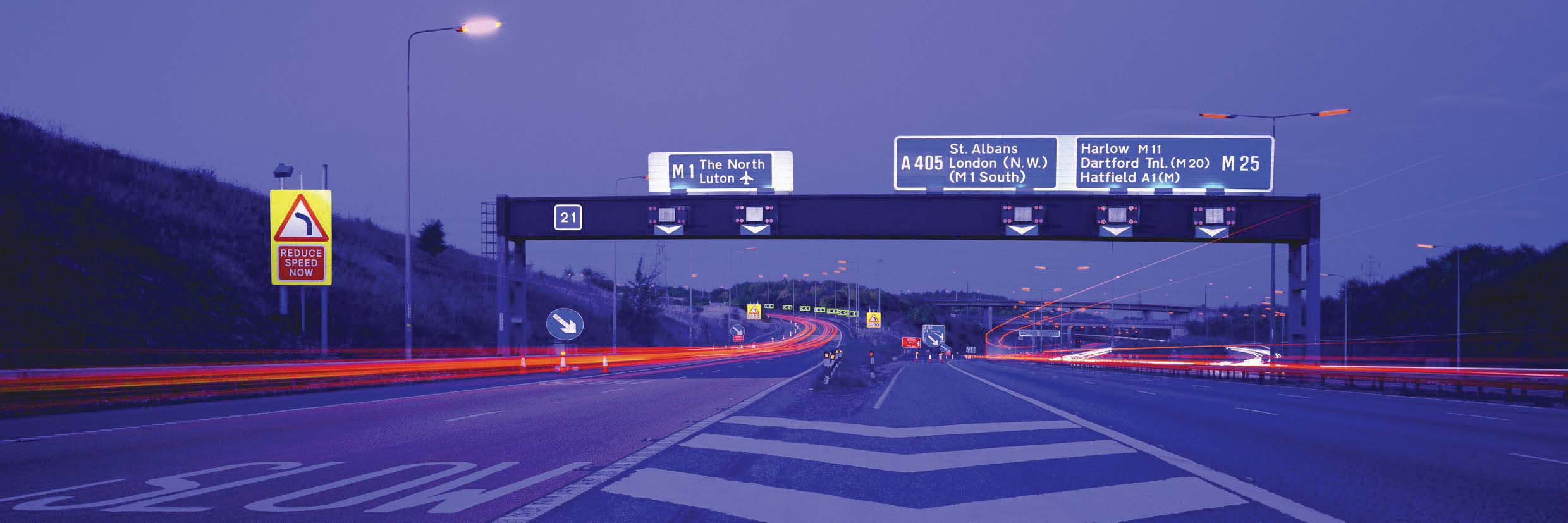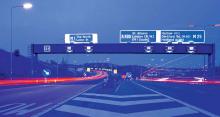On 27 November, six key stakeholders sounded an alarm bell to Member States urging them to stick to their pledges made at the International Transport Forum meeting in May 2013, where Ministers signed a joint declaration on Sustainable Infrastructure Financing
On the occasion of the launch the latest consultation paper on ‘Roads that Cars can Read’, The European Automobile Manufacturers Association (ACEA), the Federation Internationale de l’Automobile (FIA), the International Road Transport Union (IRU), t

The visibility of road markings at night or under different weather conditions is a key safety issue
On 27 November, six key stakeholders sounded an alarm bell to Member States urging them to stick to their pledges made at the 1102 International Transport Forum meeting in May 2013, where Ministers signed a joint declaration on Sustainable Infrastructure Financing
On the occasion of the launch the latest consultation paper on ‘Roads that Cars can Read’, The European Automobile Manufacturers Association (6181 ACEA), the Federation Internationale de l’Automobile (FIA), the 1203 International Road Transport Union (IRU), the European Car Assessment Programme (EuroNCAP), the European Road Assessment Programme (1200 EuroRAP) and the ERF issued an unprecedented statement.
This reads: “Throughout Europe, the declining condition of our roads has become a matter of deep concern.The failure to maintain the value of this fundamental asset underpinning the entire European economy and society brings costs that everyone will pay in higher taxes, higher motor and health insurance, and fewer jobs. Failure to manage the financing of proper road maintenance is a failure of good government.’
The statement concluded, ‘We call on the Commission and all stakeholders to support this strategy to develop roads that both drivers and vehicles can read’.
Alarmed at the rapid deterioration of core road infrastructure elements such as road markings and signs, ERF responded to the consultation that EuroRAP and EuroNCAP had launched in the summer of 2011 that had urged experts to sit together and adopt a quality standard for markings and signs to make sure that they are visible to drivers but at the same time, make the most of the promising new vehicle technologies, such as Lane Departure Warning/Lane-keeping Assistance systems and Traffic Recognition systems.
‘From an ERF perspective, we always puts the user’s needs at the heart of any safety solutions we propose’ explained Konstandinos Diamandouros, head of office at the ERF and responsible for activities in the field of road markings. ‘The challenge was to come up with a solution that was first and foremost a service to the user, but at the same time could optimise the interaction with Advanced Driver Assistance Systems’.
The ERF Working Group on Road Markings started collecting national specifications for road markings Member States and digging into past and ongoing research. At the same time, under the auspices of the EuroRAP it began a trialogue between ACEA, EuroRAP and ERF to try to understand how vehicle technologies work and how existing road marking specifications can help optimise performance.
The conclusions of both researches did not result in a revolutionary breakthrough but rather seemed to confirm some simple truths. The presence of well maintained, visible and wide road markings not only could ensure a high rate of detection by Lane Departure Warning systems, but would ensure that drivers would get what they deserve, such as good quality road markings that remain visible under all weather conditions.
‘Based on the available evidence and our research, we decided to propose something that we believe would be both realistic and cost-effective’ explains George Lee, Chairman of the ERF Working Group on Markings. ‘We are proposing what has been coined as 150x150. In other words, an intervention and maintenance policy that guarantees road markings are a minimum width of 150mm for all roads and their performance should not be allowed to drop below 150mcd/lux/m² (R3) in dry weather conditions and 35mcd/lux/m² (RW2) in wet and rainy conditions.’
‘The reactions we have received are mixed so far but all in all, administrations are seeking to understand the background to the proposal and learn more’, explained Diamandouros. ‘We understand that in some cases what we are proposing is higher than what is inscribed in national legislation. At the same, it seems curious that in countries with heavy rainfall such as the UK and Belgium, the more widespread use of wet-night visible road markings on most roads should be a point of contention.’
‘Despite all the hype about self-driving cars, all experts in the field acknowledge that automation on a grand scale is still at least 20 years away. Until then, the most intelligent solutions will be to make available traditional established solutions such as markings and the new vehicle technologies which are close to market’, explained Lee.
The next step for the ERF is to elaborate a specification for road signs which respond to the Roads that Cars Consultation launched in November 2013. The paper should be available by the second half of 2014.
Relevent Documentation
• ERF Position Paper on Marking the Way Towards a Safer Future
• Roads that Cars can Read Consultation Paper
• Joint Statement on Road Investment and Maintenance
On the occasion of the launch the latest consultation paper on ‘Roads that Cars can Read’, The European Automobile Manufacturers Association (
This reads: “Throughout Europe, the declining condition of our roads has become a matter of deep concern.The failure to maintain the value of this fundamental asset underpinning the entire European economy and society brings costs that everyone will pay in higher taxes, higher motor and health insurance, and fewer jobs. Failure to manage the financing of proper road maintenance is a failure of good government.’
The statement concluded, ‘We call on the Commission and all stakeholders to support this strategy to develop roads that both drivers and vehicles can read’.
Alarmed at the rapid deterioration of core road infrastructure elements such as road markings and signs, ERF responded to the consultation that EuroRAP and EuroNCAP had launched in the summer of 2011 that had urged experts to sit together and adopt a quality standard for markings and signs to make sure that they are visible to drivers but at the same time, make the most of the promising new vehicle technologies, such as Lane Departure Warning/Lane-keeping Assistance systems and Traffic Recognition systems.
‘From an ERF perspective, we always puts the user’s needs at the heart of any safety solutions we propose’ explained Konstandinos Diamandouros, head of office at the ERF and responsible for activities in the field of road markings. ‘The challenge was to come up with a solution that was first and foremost a service to the user, but at the same time could optimise the interaction with Advanced Driver Assistance Systems’.
The ERF Working Group on Road Markings started collecting national specifications for road markings Member States and digging into past and ongoing research. At the same time, under the auspices of the EuroRAP it began a trialogue between ACEA, EuroRAP and ERF to try to understand how vehicle technologies work and how existing road marking specifications can help optimise performance.
The conclusions of both researches did not result in a revolutionary breakthrough but rather seemed to confirm some simple truths. The presence of well maintained, visible and wide road markings not only could ensure a high rate of detection by Lane Departure Warning systems, but would ensure that drivers would get what they deserve, such as good quality road markings that remain visible under all weather conditions.
‘Based on the available evidence and our research, we decided to propose something that we believe would be both realistic and cost-effective’ explains George Lee, Chairman of the ERF Working Group on Markings. ‘We are proposing what has been coined as 150x150. In other words, an intervention and maintenance policy that guarantees road markings are a minimum width of 150mm for all roads and their performance should not be allowed to drop below 150mcd/lux/m² (R3) in dry weather conditions and 35mcd/lux/m² (RW2) in wet and rainy conditions.’
‘The reactions we have received are mixed so far but all in all, administrations are seeking to understand the background to the proposal and learn more’, explained Diamandouros. ‘We understand that in some cases what we are proposing is higher than what is inscribed in national legislation. At the same, it seems curious that in countries with heavy rainfall such as the UK and Belgium, the more widespread use of wet-night visible road markings on most roads should be a point of contention.’
‘Despite all the hype about self-driving cars, all experts in the field acknowledge that automation on a grand scale is still at least 20 years away. Until then, the most intelligent solutions will be to make available traditional established solutions such as markings and the new vehicle technologies which are close to market’, explained Lee.
The next step for the ERF is to elaborate a specification for road signs which respond to the Roads that Cars Consultation launched in November 2013. The paper should be available by the second half of 2014.
Relevent Documentation
• ERF Position Paper on Marking the Way Towards a Safer Future
• Roads that Cars can Read Consultation Paper
• Joint Statement on Road Investment and Maintenance






